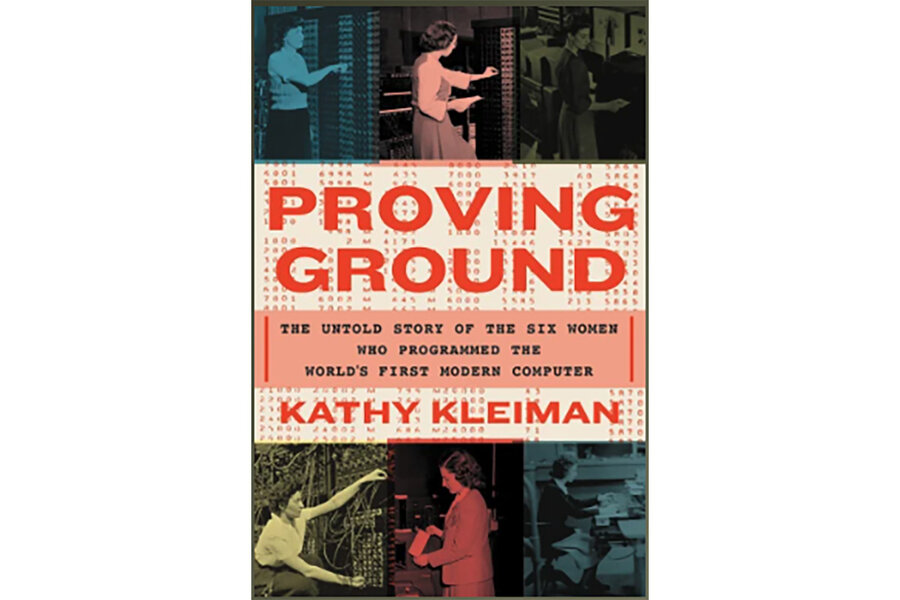The dedicated women behind the world’s first general-purpose computer
Loading...
The classified ad ran in Philadelphia-area newspapers in the early days of World War II: “Looking for Women Math Majors.” With men enlisting to fight, the U.S. Army’s Ballistic Research Laboratory was hiring women to work at the University of Pennsylvania’s Moore School of Electrical Engineering, to do what had been considered men’s work. They would calculate, by hand, the ballistics trajectories of the artillery being used in battle.
Kathy Kleiman’s “Proving Ground: The Untold Story of the Six Women Who Programmed the World’s First Modern Computer” is a lively group biography of the women who performed those calculations. From there, they were hired to work on ENIAC, the first general-purpose electronic computer, which was developed to speed up the ballistics calculations.
Kleiman has been interested in the group she calls the ENIAC 6 for decades. As an undergraduate studying computer science, she came across an old photograph of ENIAC (short for electronic numerical integrator and computer), the hulking machine in the Moore school’s basement. Two women appeared in the photograph along with four men, but when the author tried to find out who they were, one expert in computer history dismissively told her that they must be models.
Kleiman eventually tracked down and completed oral histories with four of the six women. (The ENIAC 6 are Kay McNulty, Frances Bilas, Betty Snyder, Marlyn Wescoff, Ruth Lichterman, and Jean Jennings.) She founded the ENIAC Programmers Project, which produced a 2014 documentary about them.
ENIAC was created by physicist John Mauchly and electrical engineer J. Presper Eckert. While a missile could reach its target in less than a minute, calculating a missile trajectory by hand took on average 30 hours. Mauchly had long had a vision of an electronic programmable computer, and, with funding from the Army, the war created the opportunity for him to build it, with Eckert’s help. Once programmed, ENIAC could calculate a trajectory in 30 seconds.
“Modern programmers use tools such as programming languages, operating systems, and compilers,” Kleiman writes. The women had none of those tools at their disposal and weren’t even allowed to see the machine itself until late in the process, as they hadn’t received security clearance. They set about doing the work by closely studying the engineers’ blueprints and diagrams.
Kleiman describes their technical accomplishments in clear language easy for the computer layperson to follow. While their programming solutions were innovative and painstaking, the group appeared largely unfazed by the challenge. During wartime, as McNulty later recalled, “lots of people were doing out of the ordinary things.”
The women had fond memories of this period of their lives, but they described being hazed by some of their male colleagues, targeted with practical jokes and pranks. While completing a training program at the Maryland Army facility Aberdeen Proving Ground, where they were far outnumbered by male soldiers, they were stared at and catcalled. Jennings recalled feeling “like a piece of meat surrounded by vultures.”
They experienced additional indignities: They were initially given a job rating of “subprofessional,” not based on the work they were doing but because the Army didn’t allow women, regardless of their positions, to be rated “professional.” And when ENIAC was finally unveiled to journalists and scientists in early 1946, the women were invited to the demonstration not as collaborators, but as hostesses, tasked with greeting the male guests and pouring coffee.
The final indignity lies in the fact that the women were all but forgotten. In 1995, when the author realized that the 50th anniversary of ENIAC was approaching, she called the Moore school to find out if the occasion would be commemorated. She learned that an event was being planned, but when she asked the organizer if the women were being invited, he responded, “Who are you talking about?”
Kleiman tracked down the surviving programmers and helped get them to the event.
This engaging book is the culmination of her efforts to raise their profile.








